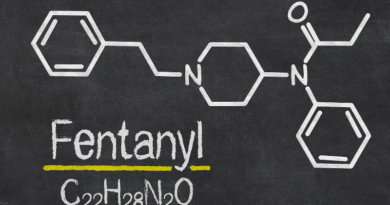Unlock Hope at Plexus
Advanced Stem Cell Therapy for Spinal Cord Injury in India
Spinal cord injury (SCI) is a life-altering and invariably devastating condition. It is the mutilation of the spinal cord that causes reversible or irreversible changes in its function. The symptoms of an SCI may include loss of muscle function, sensation, or autonomic function in parts of the body supplied by the spinal cord below the level of the injury.
Patients who suffer spinal cord injury are typically unable to recover the degree of functionality they had before the injury. They are either paralyzed or highly limited in their range of movement, in their upper or lower extremities or both. In addition, spinal cord injury leads to several secondary conditions like deep vein thrombosis, chronic pain, urinary tract infection, respiratory problems, and more, for which the patient needs continuous care.
At Plexus, we go beyond the traditional treatment approaches that do not offer much in the way of restoring lost function of repairing damaged neural tissue. We offer customized regenerative rehabilitation programs comprising stem cell therapy, stem cell nutritive therapy, and various medications. Our rehabilitation programs also include physiotherapy, occupational therapy, speech therapy, acupuncture, therapeutic massages, and similar procedures.
This blog delves into the potential of mesenchymal stem cell therapy as a new age treatment for spinal cord injuries and how it can significantly contribute to remarkable functional recovery.
Table of Contents
What is a spinal cord injury?
The spinal cord plays a critical role in transmitting signals between the brain and the rest of the body. It is a key player in the central nervous system. Injuries to the spinal cord disrupt this communication, leading to various degrees of paralysis and loss of sensory function.
A spinal cord injury (SCI) is a devastating medical condition that occurs when the spinal cord is damaged, leading to a wide range of physical and neurological impairments. The consequences of SCI can be life-altering, impacting an individual’s mobility, sensation, and overall quality of life. An SCI can also lead to secondary complications such as osteoporosis, pressure sores, and muscle atrophy.
The severity of damage to the spinal cord determines whether the injury is complete or incomplete. The location of the injury also determines how severe the symptoms are.
A complete injury results in absolutely no movement and feeling below the level of the injury.
An incomplete injury will still have some degree of movement and/or feeling below the level of the injury.
Based on the above, there are two medical terms used to describe the condition:
- Quadriplegia/Tetraplegia: Loss of movement and feeling in arms, legs trunk, pelvic organs
- Paraplegia: Loss of function and feeling from the waist-down (trunk, legs, and pelvic organs)
Causes of SCI
Any traumatic injury that leads to the compression of the spine or neck may be a potential cause of SCI. These include:
- Sports injuries
- Diving accidents
- Trampoline accidents
- Motor vehicle accidents
- Abscess on spinal cord caused by infection
- Acts of violence
- Birth injuries
- Gunshot wounds
- Complications from surgery
- Falls
- Herniated discs
- Tumors (In or near the spinal cord, leading to compression and damage)
- Infections
- Vascular conditions
- Degenerative disc disease
Congenital Conditions
In rare cases, SCI may be present from birth due to congenital conditions like spina bifida, where the spinal cord does not develop properly.
Symptoms of SCI
Motor Symptoms
- Paralysis
- Muscle spasms
- Impaired coordination
Sensory Symptoms
- Loss of sensation
- Altered sensation
Autonomic Symptoms
- Blood pressure changes
- Bowel and bladder dysfunction
- Sexual dysfunction
Respiratory Symptoms
- Breathing difficulties
If you develop or experience any or a combination of the above symptoms after a traumatic injury or accident, you need to consult your doctor immediately! The time between the injury and treatment plays a critical role in determining the severity and extent of damage (complications).
Types of SCI
Cervical SCI is regarded as the most severe. It is caused by injury to the neck region of the spinal cord (between C1 and C7 vertebrae). It invariably leads to partial or complete paralysis along with associated medical complications. The fatality rate attached to cervical SCI is also extremely high.
Thoracic SCI is caused by injury to the upper chest, abdominal muscles, and mid-back. Loss of sensation in the limbs and genitals, incontinence, and lower back pain are some of its typical symptoms.
Lumbar SCI affects the hips and legs. It can lead to varying degrees of loss of motor function in the lower body.
Sacral SCI is rare, and typically affects upper thighs, hips, buttocks, and genitals. It is caused by injury to the sacral region. Loss of function in the legs and hips is an indicator of this type of SCI. However, patients can regain the ability to walk with timely treatment and physiotherapy.
How to treat an SCI?
An SCI is categorized as a medical emergency. Only after a full medical examination is conducted, can a proper prognosis or treatment plan be drawn. The full medical examination will include a range of tests, such as CT scan, MRI, blood tests, and X-Rays.
Other factors that determine that course of treatment comprise:
- The patient’s age
- Medical history
- Type of SCI and its severity
- Initial response and treatment offered immediately at the site of the accident
The traditional treatment plan for SCI involves:
- Observation and after-care in the ICU
- Physical therapy – to help with recovery and possibly regain some motor function
- Occupational therapy – to help improve daily functioning and regain independence
- Medicines like corticosteroids – to help reduce the swelling in the spinal cord
- Feeding tube – placed through the nostril or directly through the abdomen into the stomach)
- Bladder catheter
- Ventilator
The recovery phase of SCI involves long-term hospitalization and rehabilitation. During this time, the treatment will focus on helping you manage your pain, better your heart function, monitor bladder and bowel control, and attempt to control muscle spasticity (involuntary shaking).
In some cases, surgery may be recommended in order to assess the extent of injury, repair fractured vertebrae, release localized pressure, and treat any other injuries that may have been sustained at the time or after the accident.
The Answer is Here!
Plexus rehabilitation for SCI
Spearheaded by Dr. Na’eem Sadiq, India’s foremost neurologist and internationally renowned stem cell specialist, Plexus Neuro and Stem Cell Research Centre is India’s first ISO-certified stem cell research centre.
At Plexus, we believe the unique characteristics of stem cells make them a compelling candidate for treating spinal cord injuries. We use mesenchymal stem cells (MSCs) owing to their regenerative capabilities and immunomodulatory effects. We source MSCs from the patient’s own body, typically from various tissues, such as bone marrow, adipose tissue, and umbilical cord tissue.
Mesenchymal stem cell treatment for spinal cord injury in India
Stem cell therapy is offering an extended lease on life to patients suffering from various neurological diseases and disorders. An SCI can be treated and its symptoms can be managed effectively through stem cell therapy.
Stem cell therapy is essentially a type of regenerative treatment that uses the body’s natural healing mechanism to treat a number of conditions. The injected stem cells have healing abilities. They modulate the immune system and help reduce inflammation.
MSCs are a type of multipotent stem cell that can differentiate into various cell types, including osteoblasts, adipocytes, and chondrocytes. When injected into the injured spinal cord, MSCs exert their effects through a combination of differentiation, trophic support, and immunomodulation. Let’s observe this phenomenon in a little more detail.
Differentiation
MSCs can differentiate into neural cell types, including neurons and glial cells, thereby contributing to the regeneration of damaged neural tissues.
Trophic support
MSCs are known to secrete bioactive molecules, such as growth factors and cytokines, that can create a favorable microenvironment for tissue repair. This kind of trophic support helps stimulate angiogenesis (formation of new blood vessels), lessens inflammation, and promotes cell survival.
Immunomodulation
The unique immunomodulatory properties of MSCs suppress excessive inflammatory responses and promote an anti-inflammatory environment. This is a game-changer when it comes to SCI treatment, where inflammation can exacerbate tissue damage.
The Plexus Rehabilitation Program for Spinal Cord Injury is the first-of-its-kind regenerative rehabilitation program in India. Through this program, we aim to help the patient to not just live with an SCI, but thrive in spite of it!
A number of SCI patients have made incredible progress under the care of Dr. Sadiq and his team. They have seen an increase in mobility, better motor function (with some of them even being able to walk again), enhancement in sensory perception, better bladder and bowel function, reduced muscle stiffness/spasticity, and numerous other progressive changes.
This no-surgery and zero-side effects treatment has various benefits like:
- Improved functionality and overall quality of life
- Injury reversal/slower rate of decline
- Prevention of further nerve damage
- Regeneration and restoration of damaged nerve cells
- Reduced inflammation
- Immune system modulation
- Speedy post-procedural recovery
In addition to offering the most advanced stem cell treatment for spinal cord injury in India, our rehabilitation program for SCI also comprises:
Physical therapy
Physical therapy for SCI rehabilitation is a great way to improve mobility and enhance the patient’s quality of life. Exercise is the key to prevent spasticity of muscle resulting from SCI. Passive range-of-motion exercises (PROM) and self range-of-motion exercises (SROM) can help improve muscle flexibility to a great extent.
Depending on the extent of your injuries, your physical therapist will draw up an exercise plan that can involve –
- Gait-training
- Balance training
- Mobility training
- Trunk control and strength training
Physical therapy is essential for the management of pain, as well as helps improve flexibility, strength, and endurance.
Occupational therapy
An SCI can drastically reduce everyday functionality. The most mundane of activities becomes the most challenging. Occupational therapy can significantly improve daily living even when there are physical and cognitive limitations. This science-backed approach includes –
- Activities for daily living training
- Balance and coordination training
- Handwriting training
- Splinting and assistive devices
- Cognitive rehabilitation
- Hand function training
The regenerative properties, immunomodulatory effects, and multipotent nature of MSCs have shown incredible results in promoting neural repair and functional recovery for patients with SCI.
As India’s leading proponent of regenerative rehabilitation with more than 35 years of clinical experience, we assure you an experience that is safe and risk-free.
Reach out to our team in Bangalore or Hyderabad today.
WhatsApp +91 89048 42087
Call +91 78159 64668 (Hyderabad) | +91 82299 99888 (Bangalore)
You can also visit our website www.plexusnc.com to know more about stem cell therapy for spinal cord injuries, as well as other neurological conditions.







